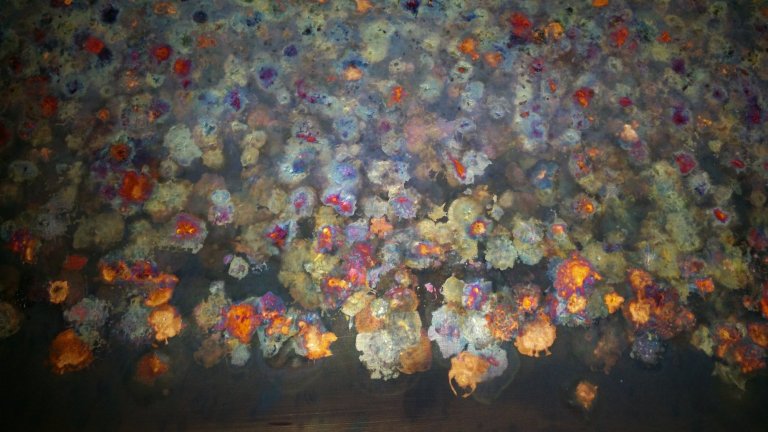
© Christophe BARUÉ / GANIL / CNRS Images
View the mediaFolder
Nuclear and particle physics study the infinitesimal constituents of matter and their interactions. Scientists are exploring their origin, their nature, their properties and the fundamental mechanisms that form the structure of the matter in the world around us.

© Christophe BARUÉ / GANIL / CNRS Images
View the mediaNuclear physics took off at the very end of the 19th century with the discovery of the electron, X-rays and radioactivity. Physicists then discovered that at the centre of each atom there is a nucleus consisting of two kinds of particles: neutrons and protons. Depending on their number, these particles influence the nature of the atom, its properties, but also its shape and stability. To study them, scientists have learned to manipulate them, break them (fission), fuse them, etc. So far, more than 300 different stable or quasi-stable nuclei have been identified and new “exotic” ones are regularly created in accelerators, such as at Ganil in Caen. The challenge is to understand the forces at work in the nuclei in order to predict their behaviour in nature or the cosmic processes that led to their appearance on Earth. This is a complex task because protons and neutrons themselves consist of elementary particles, quarks, welded together by gluons. The core turned out to be a collection of particles in permanent motion, like a kind of fluid and of a complexity that still challenges scientists today.
Particle physics is interested in the elementary constituents of matter – those that we think are indivisible – and their interactions. Scientists create these particles in colliders, such as at CERN in Geneva, where they collide with electrons, protons or other larger nuclei. Particles, sometimes new ones, are born from the energy produced by the collisions and are studied in the detectors. The mass of data gathered as a result of a considerable number of collisions makes it possible to discover these new particles or to observe new effects. The last particle discovered, at CERN in 2012, is the Higgs boson. Paradoxically, this exploration of the infinitely small gives us a better understanding of the infinitely large, i.e. how the Universe was able to be structured and become what it is today.
Astroparticles refer, generically, to all the “messengers” received on Earth from the cosmos: neutrinos, cosmic rays, gamma photons or gravitational waves. Scientists are interested in them because they bear witness to the most violent phenomena in the Universe. Giant detectors, satellites and telescopes are used to track and thus study these cataclysmic phenomena.
Discover through images the extent of the research being done in nuclear and particle physics in CNRS laboratories.
Keywords : particle accelerator, astroparticle, Higgs boson, CERN, collider, fission, fusion, Ganil, leptons, matter, standard model, neutron, nucleus, nucleosynthesis, elementary particle, nuclear physics, quark and gluon plasma, proton, quark.
Our work is guided by the way scientists question the world around them and we translate their research into images to help people to understand the world better and to awaken their curiosity and wonderment.